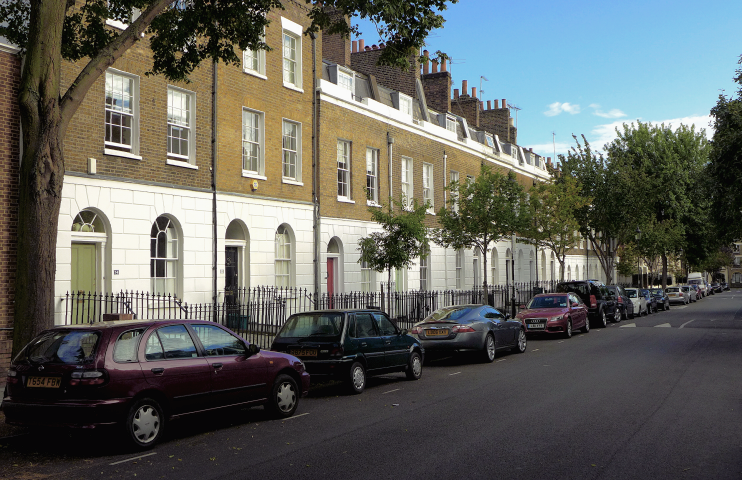Barnsbury
Barnsbury, Islington
A pioneering gentrified locality consisting of a mix of older terraces and squares (plus some council blocks) in north-west Islington

The 13th-century Berners family gave their name to a large manor, of which present day Barnsbury covers just a small part. Legal obstacles prevented building on the land until the 1820s, significantly later than nearby districts such as Canonbury.
In the 1830s an eccentric Frenchman named Baume set up the short-lived Barnsbury Park Community, a co-operative project with a farm and a college, settled by radical tailors and shoemakers. Elsewhere, the rows of narrow-fronted terraces were destined to house a lower class of occupant than its developers intended, especially when the building of the railways prompted the better-off to flee to more distant suburbs. Many larger houses were subdivided for multiple occupancy, or even turned into factories.
From the early 1960s (or the late 1950s, if you count a handful of trailblazers) Islington began to regain its appeal to the middle classes and Barnsbury’s protracted decline was reversed. During the 1970s some of the most run-down sets of buildings were demolished and the council and Barnsbury Housing Association put up new homes. The latter also restored some older properties, which often retained their original architectural features because speculators hadn’t hitherto deemed the area worthy of redevelopment. Young professionals flocked in and the district became known for its ‘liberal intelligentsia’ – including numerous writers and journalists, as well as Tony Blair before he became prime minister.
Prices here subsequently escalated to the detriment of the sense of community fostered by the first wave of well-intentioned gentrifiers, “pioneering among the crumbling Georgian cliffs of Barnsbury,” with household incomes now typically in six figures.
Barnsbury is sometimes identified as the first London locality to have undergone gentrification. However, when the sociologist Ruth Glass coined the term ‘gentrification’ in the context of urban renewal (in London: Aspects of Change, 1964), Barnsbury was still an overwhelmingly working-class area, while she pointed out that the upper-middle class takeover of the poorer enclaves of Hampstead and Chelsea had already been “consolidated some time ago.” It’s truer to say that Barnsbury was a pioneer of post-war gentrification.
